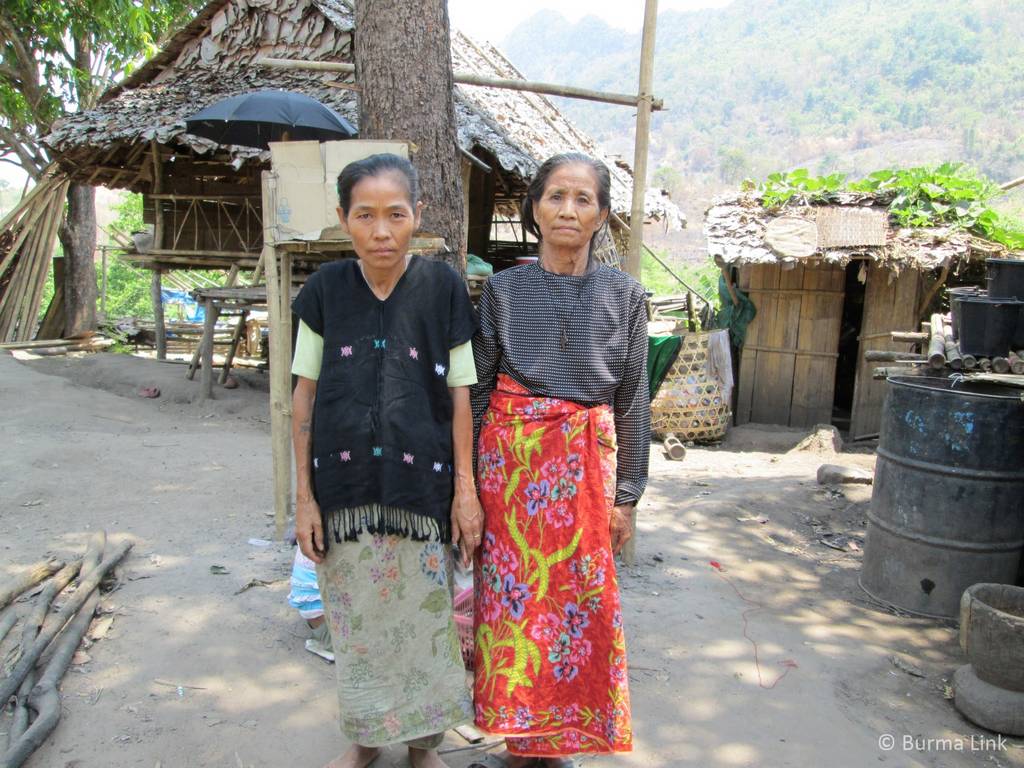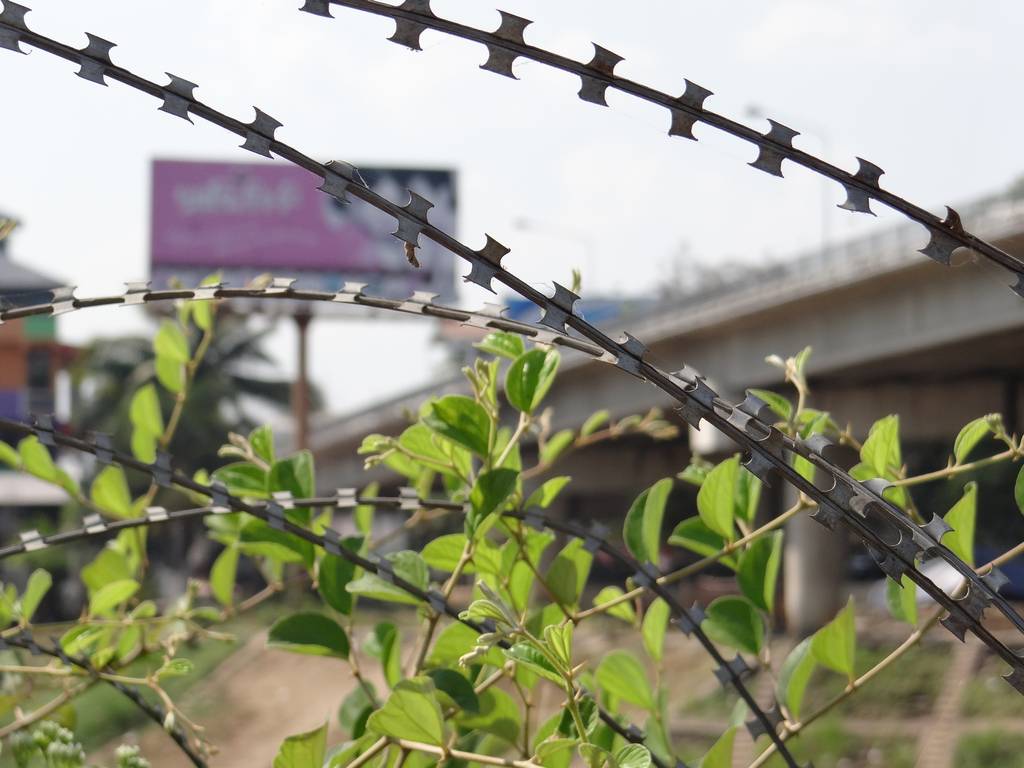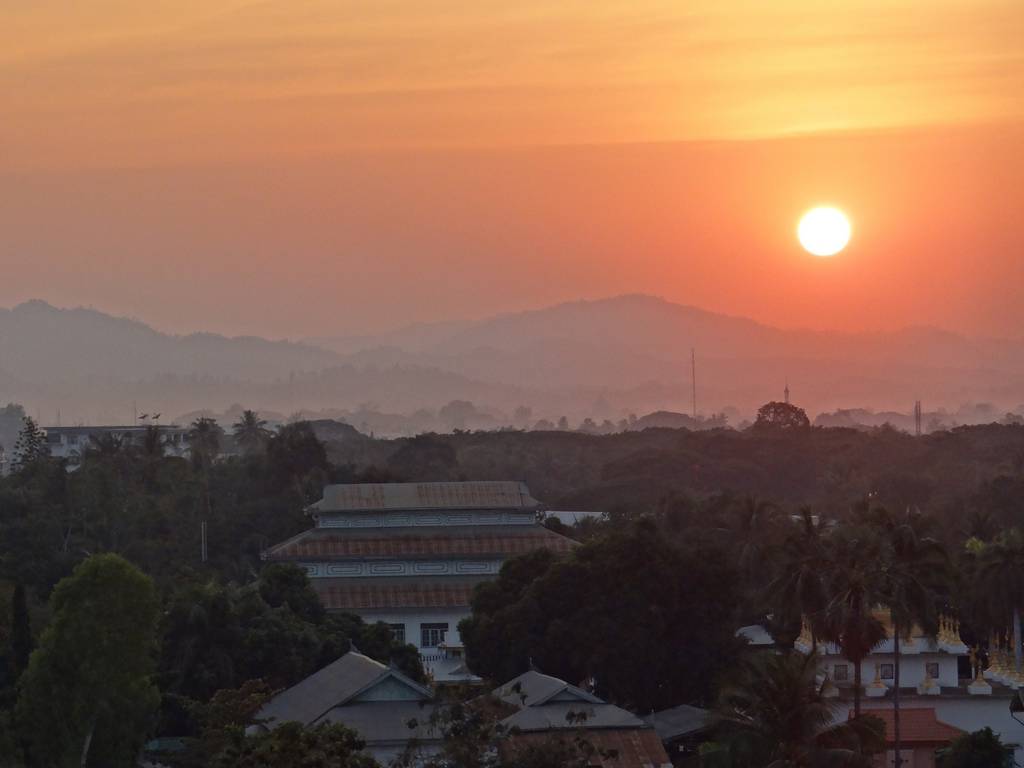In 2006, IRC conducted an interview survey of 1704 Burmese living in border areas of Thailand, aiming to document the migrants’ experiences and assessing the degree to which they merit international protection as refugees (Green-Rauenhorst et al., 2008). Results revealed many stories of the Burmese migrants sharing similar threads of violence, displacement due to conflict, and fear of return. In a similar vein, Human Rights Watch reported in 2012 that many of the Burmese interviewees living outside the camps were refugees who had chosen to risk detention and deportation in order avoid the humiliations and dependency of camp life (Human Rights Watch, 2012e). Indeed, when talking with many people from Burma in villages on the Thailand-Burma border, it becomes clear that many refugees have chosen to live in villages, even with great struggles to make a living and far away from hospitals, to keep some degree of freedom and a sense of independency.

Two sisters who have fled Burma and live in a Karen village on the Thai side of the border. (Photo: Burma Link)
Burma’s refugees in Thailand face a stark choice: “They can stay in one of the refugee camps along the border with Burma and be relatively protected from arrest and summary removal to Burma but without freedom to move or work. Or, they can live and work outside the camps, but typically without recognised legal status of any kind, leaving them at risk of arrest and deportation (Human Rights Watch, 2012e, p. 1).” As a result of inadequate protection and registration of refugees, as well as the highly restricted life in refugee camps in Thailand, scores of refugees live in the country as illegal aliens.
Some refugees, many of them ethnic Shan and Mon, have not even had a choice to live in a camp. Unlike on the borders of Karen and Karenni States, there are no official refugee camps along the Thailand-Shan border. According to a report by SHRF and SWAN (2002), Thai policy recognises only “temporarily displaced persons” fleeing directly from fighting, and not from the abuses inflicted on civilian populations by the Burmese military’s anti-insurgency campaigns. Therefore, the estimated population of over 150,000 Shan refugees, who fled to Thailand following the forced relocation in central Shan State in 1996, have been denied any protection and humanitarian assistance and have been forced to find work as migrant labourers. The report by SHRF and SWAN clearly demonstrates how lots of Shan exiles have a genuine fear of persecution.
Ethnic Mon people also represent very small numbers of the refugee camp residents despite the fact that thousands of Mon have fled conflicts and abuse in their land. With no majority-Mon refugee camps on Thailand’s soil, many Mon either live as IDPs on the Burma side of the border, or as undocumented migrants outside the camps. Similarly to other undocumented refugees in Thailand, all of these people are liable for arrest, detention, and deportation at any time.
In 2002, the IRC reported that over 19,000 undocumented Burmese (see terminology) migrants were arrested and deported over a four month period (Green-Rauenhorst et al., 2008). Many of them were sent directly to the SPDC reception centre in Myawaddi, opposite to Mae Sot in Tak Province. Interrogations are known to be conducted in the centre, which in turn have been directly linked to torture and other severe ill treatment in Burma (see e.g. AAPP, 2011; ND-Burma, 2012a).
Since 2004, Thailand has offered migrant workers, who play an important role in the Thai economy, the opportunity to register and receive temporary work permits. Having a work permit can still be entirely dependent on the migrants’ willingness and ability to pay and sometimes Thai employers may not be willing to go through the process with their employees. In 2009, the Thai government began to institute a new system of registering migrant workers, requiring undocumented migrants to first undergo a Nationality Verification process with their own governments (see Human Rights Watch, 2012e). For many people of Burma, however, returning back to their home country is not an option.
Many undocumented migrants carry a variety of documents, many of which have no legal validity. Some migrant worker ID cards are also locally issued informal work permits that bar the bearer from traveling outside the province where the migrant worker is registered. Burmese migrants have voiced added concerns over the cost of the documents, fraudulent documents, and corruption (see e.g. Human Rights Watch, 2012e). Even where there are rules, the rules are often bent, and even with all the correct documents, migrants might still get in trouble. In December 2014, well over one million Burmese migrant workers in Thailand remained undocumented (TBC, 2015a).
“I can’t solve these problems and be free from these troubles. The only way is to flee into Thailand and search for a job as a migrant worker.” (Shan man, Mong Nai Township, interviewed in June 2008; TBC, 2008, p. 26)

Barbed wire fence next to the friendship bridge linking Myawaddi and the Thai border town of Mae Sot. (Photo: Pierre Moreau)
In recent years, the Thai authorities have stepped up their efforts and taken more measures to address undocumented migrant workers and human trafficking by establishing service centres across the country where undocumented migrants can register and receive temporary work permits (TBC, 2014a). However, despite registration, the migrant working status is only temporary and therefore not considered a durable solution (TBC, 2015a). Thailand has also allowed an impressive amount of work to be undertaken on the Thailand-Burma border with the aim of building a better Burma for future generations. The border is home to numerous local organisations set up by refugees and migrants from Burma. Although these organisations are typically divided along ethnic lines, there is also a high degree of cooperation and networking between the groups as well as inter-ethnic diversity within the organisations.
The scope of local women organisations on the border is particularly impressive considering the circumstances these women have experienced in their home country. Some of these organisations include the Kachin Women’s Association Thailand, Karen Women’s Organization, Palaung Women’s Organization, and Shan Women’s Action Network. Since 1999, eleven ethnic women’s organisations have joined together under the umbrella of Women’s League of Burma (WLB), which aims to increase the participation of women in the struggle for democracy and human rights, promoting women’s participation in the national peace and reconciliation process, and enhancing the role of the women of Burma at the national and international levels (see WLB, 2011 – The Founding and Development of the Women’s League of Burma).
The Thailand-Burma border, during the past decades, has become home not only to scores of Burmese exiles who have fled their home for numerous reasons, but also to a highly organised movement that works towards a free, peaceful, and democratic Burma.

Sunset over the border town of Mae Sot, Thailand, where thousands of Burmese live as illegal aliens. (Photo: Pierre Moreau)
Updated April 27, 2015
Continue to Displaced in Burma
